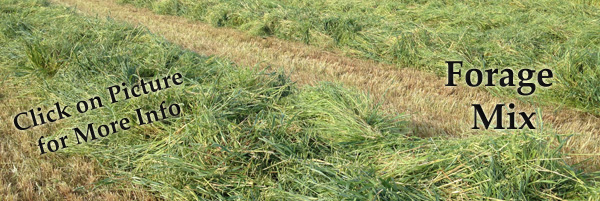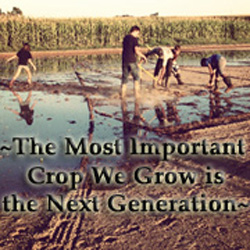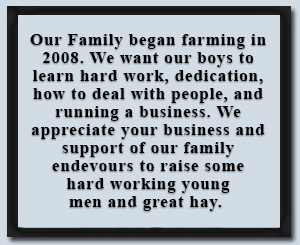2016 Horse Quality Forage
Forage for Livestock listed in Econ Hay
Moisture 11.7%
Dry Matter 88.3%
Crude Protein 7.8%
ADF 36.2%
NDF 53.1
RFV 106
Moisture 9%
Dry Matter 91%
Crude Protein 10%
ADF 37%
NDF 58%
RFV 97
Moisture 9.5%
Dry Matter 90.5%
Crude Protein 9.0%
ADF 32.9%
NDF 52.3%
RFV 97
Our forage hay is a three way mix of, Beardless Wheat, Beardless Barley, and Oats. With a three grain crop we can achieve a tasty nutritious hay that animals love and leave nothing left behind. Growing different grains together we can combine the different developing stages to reach a high quality hay in the bale. Different grains develop at different rates. We cut our forage hay with barley in strong dough stage, Oats in the dough, and the wheat in the boot/early milk. What does all that mean?
While developing grain goes through an interesting process. At least it is to us, and it should be to you if you want to end up with a quality hay that meets your animals nutrition needs. Once the plant has developed it comes to the point it begins to mature(make seed) and think about dying(so it can reseed) To start making it’s seed (the grain head) it sends water to the pod you would find the grain in. This water then turns a milky color. Hence the term milk. Then is starts to thicken and get starchy and we call that early dough. The dough is tasty. Late dough looks exactly like bread dough and tastes yummy even to us people. We like to cut when our oats are in the dough. That puts the Barley in strong dough and the Wheat in early milk. Again we are working with three different grains so they are at different rates of development. The wheat has the highest protein when cut in the boot, the oats and barely are very appetizing, chocked full of good stuff for your animals.
If the producer misses this milky/dough stage the grain is fully developed and lost the opportune time to cut for hay. Once the dough stage is over your getting grain and straw for baling. Not an ideal hay. This kind of hay is not readily devoured by animals. They may dig through it and get the finished grain head, but the straw is very unappetizing to them, it will end up on the ground trampled.
Our boys take care of each step of the hay. They don’t hire out. This means when each field is perfect we cut it. You get the best hay this way. Every field is different and we monitor daily to ensure each field is cut at the perfect time to produce the highest quality hay.
** These are the average of all samples tested by Dairy One between years 2000-2012.



